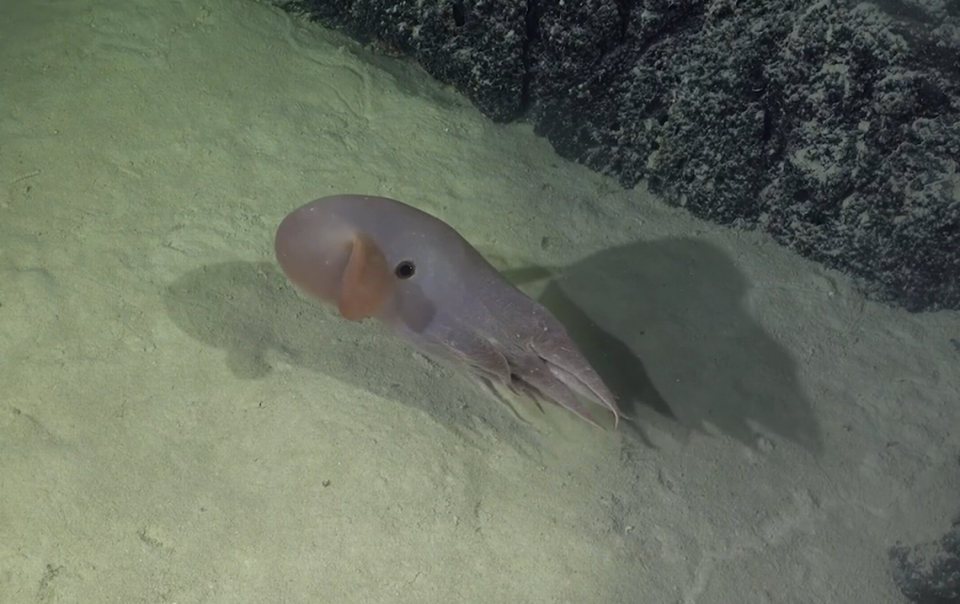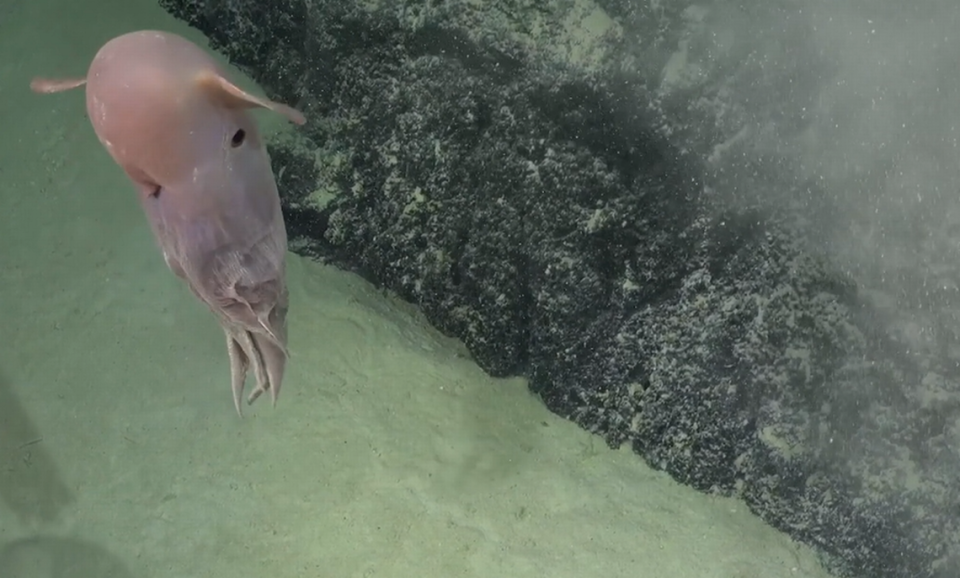‘Cutest octopus in the world’ seen for the first time in Southeast Pacific. See video
An eight-armed blob drifted through the ocean, its “large” fins flapping by its side and propelling it through the water.
Little did the deep-sea creature know, it was actually swimming by an underwater robot that was filming it.
The robot, manned by researchers, captured a video of the dumbo octopus swimming near an underwater mountain off the coast of Chile, according to a Feb. 15 Facebook post from the Schmidt Ocean Institute.

Researchers said it’s the first time the genus, known as Grimpoteuthis, has been seen in the Southeast Pacific, “a sign that the genus may live in a broader area of the ocean than initially thought.”
“Dumbo octopuses are famous for their large fins (not ears, from which they get their nickname) on their mantle, used to gracefully ‘flap’ through the water as they swim,” the institute said in a Feb. 16 Facebook post.
A Jan. 26 video shows the creature swimming with the help of its fins.

The creature’s arms are “webbed” and are covered by a single row of suckers, according to the MarineBio Conservation Society. Each sucker has about two cirri — which are fleshy, nipple-like structures. Experts believe the cirri are used to aid the octopuses in feeding.
Grimpoteuthis live “basically at the bottom of the ocean,” experts with the society said. They feed on “worms, bivalves, copepods ad crustasceans.”
The small octopuses have “relatively short arms, a bell-shaped body (and) pale coloring,” according to National Geographic. They are “often called the cutest octopus in the world.”
During their expedition, researchers with the Schmidt Ocean Institute may have identified more than 100 new species, they said in a Feb. 22 news release.
“We far exceeded our hopes on this expedition,” Javier Sellanes, a researcher from Universidad Católica del Norte who led the expedition, said in the release. “These thriving and healthy ecosystems indicate that the Nazca-Desventuradas and Juan Fernández Marine Parks effectively protect delicate marine habitats.”
A second expedition is scheduled to begin Feb. 24, the institute said.
‘Rarely seen’ deep-sea creature with ‘long, sticky tentacles’ caught on camera. See it
‘Ghostly’ creature spotted in Scotland waters is a rare Arctic visitor. See video
Transparent creatures swarm UK waters, photos show. ‘It felt like we were in space’


